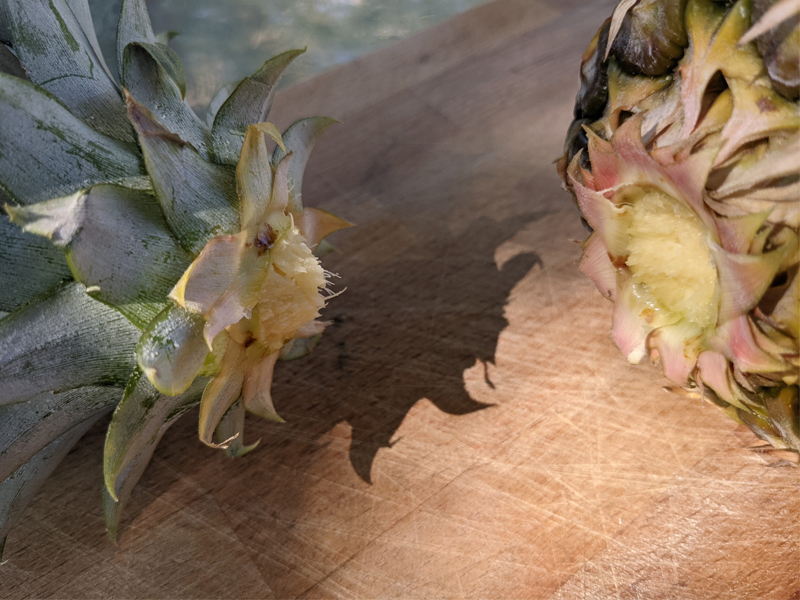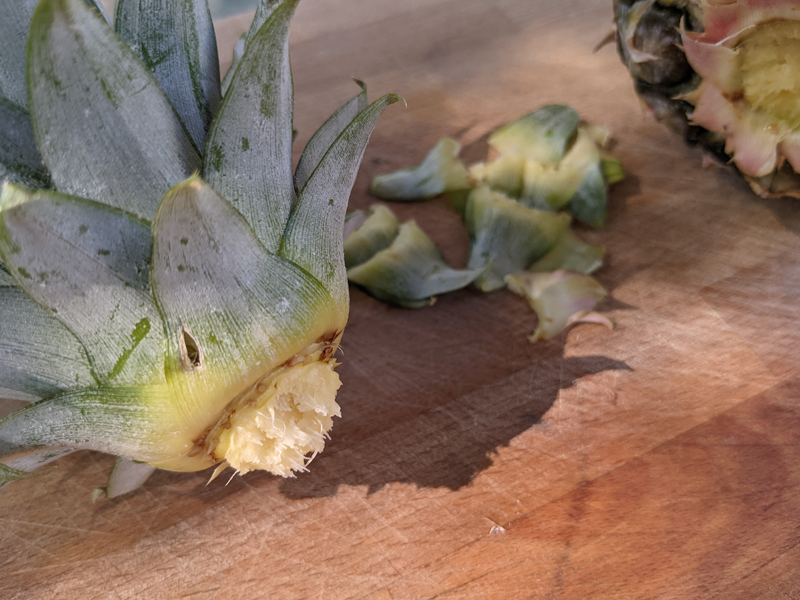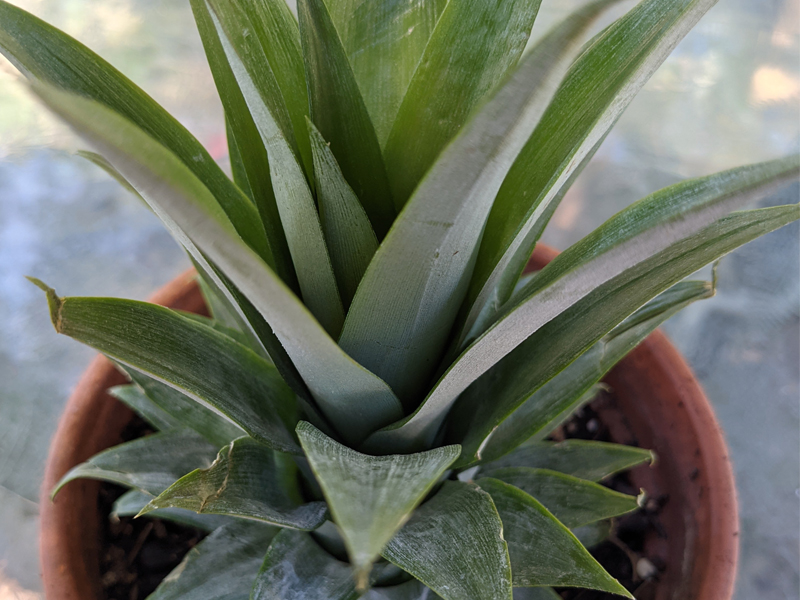Pineapples in the desert
Arizona has many seasons that are perfect for fruit growing. You can often smell the blooming flowers from fruit trees that will soon become oranges and lemons. Some cactus fruits even look like a tiny pineapple. Bromeliads, tillandsia and epiphytes are unique species of plants found throughout the tropical regions of Mexico and into parts of southern Arizona. One of the most common bromeliads is the pineapple. Bromeliads are a diversified plants with varying size, shape, texture, color and markings on it. Most bromeliads are epiphytes–air plants that grow upon another plant for support and obtain moisture and nutrients from the air, rain and debris that accumulates around it. Similar to tillandsia, epiphytes get their nutrients through dust and debris that is caught in their trichomes (hairs). One particular epiphyte native to southern Arizona is the octopus plant–often called air plant or Medusa’s head. It is a small succulent with small roots that adhere to rocks or to another plant. It collects all of its nutrients through its leaves, from rain or moisture in the air.
For this family friendly activity, you will grow a pineapple from the crown of another pineapple.
Materials:
- Sandy Soil Mixture
- Container for Pineapple Cutting
- Water
- A Fresh Pineapple | Select one that has vibrant green leaves with no sign of disease. The gold color of the pineapple indicates its ripeness, so the more gold it is, the riper the pineapple.
Instructions:
- Remove the top portion of your pineapple by firmly grasping the leaves and twisting and the crown (top). This twisting motion will separate the top from the bottom.
- Waste not, want not! Feel free to eat the fruit from the pineapple or save for later.
- Take the crown and carefully remove the first several layers of leaves from the bottom. One to two inches of of the base should be exposed.
- After removing the bottom layer of leaves, you’ll want to dry out the crown for one to two days in direct sunlight.
- Place the crown into a jar of water–only the ‘nub’ should be submerged in the water. Change the water every couple of days to keep it clean and fresh. Some of the leaves will dry and turn brown–that should be expected. However, if the crown dries out completely, you will need to start over.
- Once your pineapple has developed three inches or more of roots (after approxiomately three weeks), plant it in a potting mix. The potting mix should be a moist, sandy soil.
- For the next few weeks, keep the plant away from direct light or bright sunshine, and ensure the soil is consistently moist but not too wet.
- After about two months, you should see signs of new leaf growth from the middle of the plant.
- Note: you can skip growing the roots in water and instead place the dried out crown directly into the potting mix, though the water method is much more effective.





